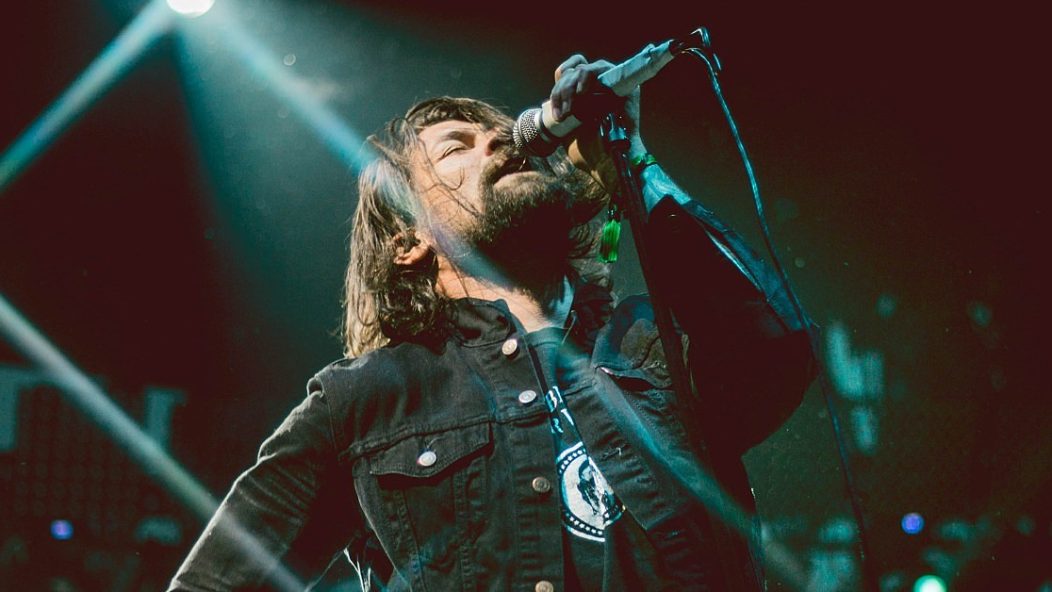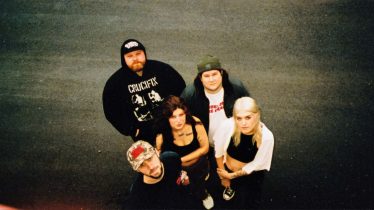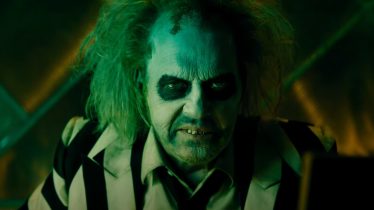
What does emo really mean? The story of the genre in 11 songs
Has any word been more misappropriated than emo? It’s been used to describe everything from people to events to films to clothing, but when it comes to encapsulating the specific music that inspired the name, no one can agree what actually constitutes it.
So what actually is emo?
Read more: Are the 2000s back? How Avril Lavigne, Chris Carrabba are uniting Gen Z and millennials
Despite experiencing a commercial boom in the 2000s, emo remains highly misunderstood and the subject of lazy stereotypes, largely based on the look of bands and fans from a very particular time (think sweeping fringes and plentiful eye makeup). This isn’t helped by the fact that emo has no single geographical epicenter. Instead, the genre has taken on various forms across the U.S., accumulating characteristics that make it increasingly difficult to identify what it is and isn’t. Of course, there’s the small matter of many of its supposed architects tripping over themselves to disavow their involvement with it. And yet, in the minds of its fans, is there any type of music that’s more romanticized?
Emo has historically become a catch-all description for a certain type of lyrically earnest rock music. Even that vague approximation, however, has been made redundant by the emergence of emo rap, just one of its many developments in recent years. So, we ask again: What is emo? Where and when did emo start? What does emo stand for? These 11 tracks map its genesis, explosion and further evolution…
1. Embrace – “Building” (1987)
Emo, short for “emotional hardcore” or “emocore,” was born in Washington, D.C. in the mid-1980s as an offshoot of the city’s post-hardcore scene. It provided a more thoughtful counterpoint to its aggression and machismo. Chief among its early pioneers were the bands Rites Of Spring and Embrace. The latter band featured Ian MacKaye, who’d go on to become a member of Minor Threat and Fugazi, and only released one self-titled album. While “Building”’s lo-fi sound and unsophisticated production sounds a million miles away from where “emo” would go in subsequent decades, its self-reflection and self-laceration (“I’m a failure”) is evident. If, however, you’re struggling to see the connective tissue, that would suit MacKaye just fine; he once denounced “emocore” as, “The stupidest fucking thing I’ve heard in my entire life.”
2. Sunny Day Real Estate – “The Blankets Were The Stairs” (1994)
If emo’s first wave was born in Washington, then its second came from America’s Midwest. In this new iteration, it moved away from its hardcore roots and became infused with elements of alt-rock by bands such as Cap’n Jazz and Cursive. Sunny Day Real Estate, however, hailed from Seattle, a city in a state of musical flux in 1994. Kurt Cobain had taken his own life a month before the release of SDRE’s debut album, Diary, thereby slamming the brakes on the grunge explosion. Yet the band were still odd ones out. Diary finds them articulating dissatisfaction and rage in a markedly different way to Seattle’s other musical sons. “The Blankets Were The Stairs” is a fine example, with its slow-burning arrangement, singer-guitarist Jeremy Enigk’s vocals wobbling with emotion and the subtle poetry of its words (“Lost myself/When pain from your heart/Left its trace/In written words/Held like a seam”).
3. American Football – “Never Meant” (1999)
American Football are from the Midwest — Urbana, Illinois, to be precise — and remained among its most accomplished exponents. “Never Meant” isn’t perhaps the go-to title most would reach for when asked for the quintessential emo track, but to the discerning fan, it’s the only choice. Its jangling, joyful arrangement and sparse melodies might be underwhelming for anyone listening for the first time now, but only because AF’s influence is so widespread you’ll think you’ve heard its stylings many times before. You have, of course, but this is the band your favorite band were trying to approximate.
4. Taking Back Sunday – “Cute Without The ‘E’ (Cut From The Team)” (2002)
This is where the blockbuster period of emo began. You could also argue, of course, that it’s where the subtlety went out of the window, particularly in relation to emo’s lyrical preoccupation with love — or, more specifically, heartbreak. Written about the end of a relationship singer Adam Lazzara had been in, “Cute Without The ‘E’” remains a solid gold example of a slick and snappy musical portrait of betrayal, a topic that would become a mainstay of the subgenre. It’s often been imitated but rarely bettered.
5. Finch – “Letters To You” (2002)
Finch’s name is increasingly forgotten in conversations about emo’s lineage, perhaps because their second album, 2005’s dark and feral Say Hello To Sunshine, worked so hard to escape the association. It’s a shame because their full-length debut, What It Is To Burn, which turned 20 this March, remains a towering marriage of complexity and catchiness from the California band, whose third breakup in 2016 appears to be the last word in their story. “Letters To You” is a reminder why that would be a terrible loss; musically propulsive and displaying a heaviness many of their counterparts shied away from, its sense of yearning is timeless — even if no one writes letters anymore.
6. Panic! At The Disco – “I Write Sins Not Tragedies” (2005)
Panic!’s breakthrough hit may have more in common with Finch than you’d imagine. This song reportedly began life as a heavier specimen, before being retooled by the Las Vegas band and producer Matt Squire to become the baroque, chamber pop-powered affair we know and love. So what makes it special? Aside from melodic irresistibility, it has to be how overwrought the whole thing is. From the song’s title — an inversion of a quote from the novel Shampoo Planet by Douglas Coupland — to the soap opera intrigue of its potentially doomed wedding setting, the whole thing drips with drama. And it wasn’t just the song that changed the texture of emo, with its plucked strings and orchestral pomp; the accompanying music video took the look into steampunk territory. Emo was known for drama, but Panic! made it theatrical.
7. My Chemical Romance – “Teenagers” (2006)
A year after Panic! harnessed theatricality to introduce themselves to the world, My Chemical Romance used it to cement their place as emo’s biggest icons. While some might suggest an earlier track, such as “I’m Not Okay (I Promise)” from 2004’s Three Cheers For Sweet Revenge as the quintessential MCR selection, “Teenagers” is more appropriate for several reasons. Firstly, it distills just how much MCR had expanded the breadth of their ambitions by the time they got to their third album, The Black Parade, a concept album/rock of Queen-esque rock anthems. What’s more, “Teenagers” articulates that emo is a young person’s game, even to its most famous authors; it was written after singer Gerard Way encountered some teens on the New York subway and the sense of fear he experienced, of youths he simply didn’t understand.
8. Paramore – “That’s What You Get” (2007)
How well emo could speak to the experiences of young people in the noughties was highly questionable, given how male-centric it was. Unfortunately, this meant the 2000s scene was rife with toxicity and an atmosphere Hayley Williams has since described as “brutally misogynistic.” There’s no overstating, however, what Williams’ emergence did for representation in the scene, by providing a leading light and welcome outspoken criticism of its more unpleasant traits. And then there are the songs — honest, energetic slabs of rock, replete with lyrics such as “And why do we like to hurt so much?” Which may well be one of the most emo sentiments of all time.
9. Modern Baseball – “Your Graduation” (2014)
Emo never disappeared, but it certainly fragmented. Some of its most famous practitioners either called it a day (My Chemical Romance, who returned in 2019), went so stratospheric they were no longer viewed as emo (Fall Out Boy) or used it as a component in an entirely new sound (Lil Peep). Others, however, took things back to the source. Philadelphia’s Modern Baseball were clearly fans of the emo that sprang out of the Midwest because their second album, 2014’s You’re Gonna Miss It All, called back to many of its hallmarks. Compared to some of the more grandstanding efforts on this list, “Your Graduation” is delightfully understated, as well as being warm and intimate.
10. Lil Peep – “Star Shopping” (2015)
Hip-hop and emo combined to form emo rap in the mid-2010s, taking the vocal stylings and anguish of the former and marrying it to the beats of the latter. Lil Peep, aka Gustav Elijah Åhr, was one of its most beloved figures. “Star Shopping,” released via SoundCloud, is a particularly hypnotic example of what made him special. Musically, it’s difficult to see what it has to do with the emo of yore, but the resonance its vulnerable introspection has with other outsiders is certainly a consistent element. Sadly, we’ll never know where Lil Peep would take his pioneering efforts next; he tragically died from an accidental overdose in 2017, aged just 21.
11. Princess Nokia – “Sugar Honey Iced Tea (S.H.I.T.)” (2019)
One of the best things about emo rap’s emergence is its welcome diversity of representation. Born Destiny Nicole Frasqueri, Princess Nokia is a New Yorker of Puerto Rican descent who identifies as a gender nonconforming person who experienced a difficult upbringing — losing her mother to AIDS and experiencing physical abuse at the hands of their foster mother. PN’s music, like emo throughout its many stages, examines the juxtaposition of brutality and brilliance in the world — they released albums called Everything Sucks and Everything Is Beautiful on the same day in February 2020.
“Sugar Honey Iced Tea (S.H.I.T.)” is from the latter album and finds the self-confessed weird kid in empowered, confrontational mode, offering, “I’m not a gangster, but I can tell you I love to throw hands/On racists, bigots and scum.” It’s a long way from where emo started out, but that’s the beauty of it; the vagueness of its definition has allowed it to become fluid and futureproof.










